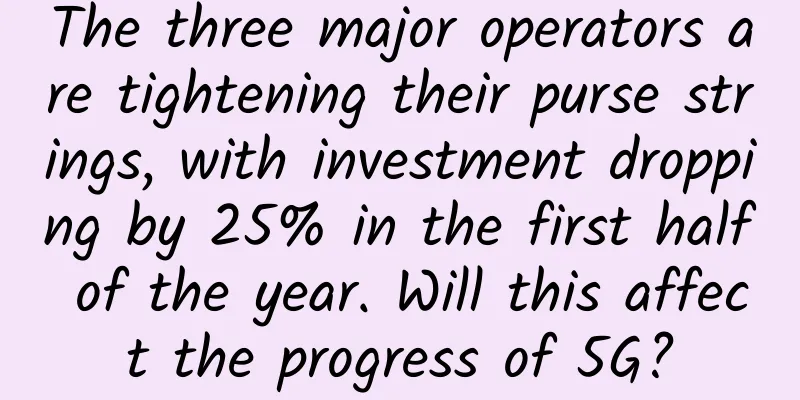Today, China’s 5G is two years old!

|
On October 31, 2019, the first day of the 28th China International Information and Communication Exhibition, the engine of China's 5G train was activated. On this day, Chen Zhaoxiong, then Vice Minister of the Ministry of Industry and Information Technology, Ke Ruiwen, Chairman of China Telecom, Yang Jie, Chairman of China Mobile, Wang Xiaochu, then Chairman of China Unicom, and Tong Jilu, then Chairman of China Tower, stood together to jointly launch the 5G commercial launch ceremony. The next day, the operator's 5G commercial packages went online, and China's 5G entered the large-scale commercial stage.
Two years have passed, and it is late autumn again. China's 5G has begun to enter the "second half". After two years of development, what level has China's 5G developed to? What challenges is it facing? Where will it go in the future? On the second anniversary of China's large-scale commercial use of 5G, IT Times asked three questions. Because seeing achievements can enhance confidence, seeing pressure can better explore deep motivation, and seeing the future can help us see the general trend. 【Ask about development】What is the level of 5G in China? Previously leading in technology, now leading in all aspects At the beginning of large-scale commercial use in 2019, or even earlier, the industry generally said that China was at the forefront of global 5G development and in the first camp. After a long run of "1G blank, 2G backward, 3G breakthrough, and 4G parallel", China is finally in the leading position, and the joy is beyond words. When we talked about China's leadership in 5G at that time, we were talking about technology and standards. China is one of the leaders in 5G standards. Chinese companies own the most 5G key technology patents in the world, and are at the forefront in technology research and development and testing. After two years of development, where is China's 5G position? The GSMA organization stated in the "2021 China Mobile Economic Development Report" released this year: "China leads the global 5G development." Image source: GSMA Now, China's leadership in 5G is not only limited to the technical level, but also leads in all aspects such as networks, users, and applications. In terms of network construction, my country has built the world's largest independent 5G network, and the coverage of 5G networks is constantly expanding. At the 5th 5G Innovation and Development Summit Forum held during the 2021 China International Information and Communication Exhibition, Xu Heyuan, deputy chief engineer of the China Academy of Information and Communications Technology, introduced that by the end of August this year, my country had fully covered 5G in all cities above the prefecture level. In addition, in the county administrative area, the number of cities with 5G network services exceeded 2,900, accounting for more than 97%, and 29 provinces have achieved 5G network coverage in all counties. In terms of user expansion, my country has the largest 5G user group in the world. From a global perspective, most countries are still in the initial stage, while my country has entered the development stage. As of the second quarter of this year, the global 5G user penetration rate was 5.9%, while my country has reached 23%. The industry generally believes that once it exceeds the critical point of 20%, 5G will enter a rapid growth stage. GSMA predicts that by 2025, China's 5G penetration rate will reach 47%, and the global average level will be around 21%. In the field of 5G applications, my country has more than 10,000 innovative 5G application cases, which are in the first echelon in the world in terms of quantity and innovation. Moreover, more than half of the world's 5G toB projects are in China. Yang Chaobin, Vice President of Huawei and President of Wireless Network Product Line, said that "China's 5G application in the industry is more advanced than that in the consumer end." 【Question 2 Challenge】How does a “model room” become a “commercial house”? Previously played "ping pong", now plays "football" At the 2021 China International Information and Communication Exhibition held in late September this year, reporters saw that 5G industry applications such as mines and steel mills became the most popular display projects. Many industry insiders said that industries such as mining and steel already have replicable and popularizable demonstration cases, and are beginning to move from "1" to "N". Image source: Shanghai Telecom, Fei Feng Due to the particularity of the operating environment, mining production has a rigid demand for the application of new technologies such as 5G. "Most of our metal mineral resources are mined underground, and some are even mined on the seabed, facing difficulties such as high production risks, high personnel costs, severe environmental pollution, and difficult equipment management." Zhan Kai, deputy general manager of Mining and Metallurgical Technology Group, said, "It is even more difficult for mining companies to recruit miners than to recruit scientific researchers and managers." Therefore, mining production urgently needs to realize automation, informatization, intelligence, wisdom, and unmanned transformation to reduce production costs and improve efficiency and safety. From the perspective of top-level design, my country has long regarded mining as a breakthrough for 5G industry applications. The Ministry of Industry and Information Technology, the National Development and Reform Commission and other ministries and commissions have successively issued guiding opinions on accelerating the development of intelligent coal mines. Xu Heyuan said: "At present, the applications of intelligent collection and production control based on the low latency characteristics of 5G, the applications of environmental monitoring and safety protection based on the large connection characteristics, and the underground inspection applications based on the large bandwidth characteristics are maturing. Mining 5G integrated applications are emerging in many places such as Shanxi, Inner Mongolia, Shandong, and Gansu." Although 5G has found suitable application scenarios in some industries, a sustainable business model has not yet been formed. Image source: Oriental IC "From our point of view, the 5G economy has not really arrived yet and is still in the stage of large-scale network deployment," Ericsson China President Zhao Juntao told the IT Times reporter. "China started 5G relatively early and moved relatively quickly. Even so, it is still in the stage of large-scale investment and deployment. Globally, 5G commercial deployment is still in the early stage of commercial deployment." Industry insiders said that in the two years since 5G commercialization, my country's 5G to B has shown a healthy development trend, but it is still in the introduction stage and needs to be transformed from a "model room" to a "commercial house". To this end, on the one hand, it is necessary to further improve the technical maturity of 5G supporting industry applications, and on the other hand, it is necessary to promote the cross-industry integration of 5G. In the past two years since the large-scale commercial use, telecom operators have played a leading role in vigorously promoting the construction of 5G networks, playing a "ping-pong singles match". The next step is a football match, which requires the cooperation of operators, equipment manufacturers, industry enterprises, etc. to promote the deep cultivation of 5G in more industry fields. 【Three Questions about the Future】Low carbon and green is the only way forward We have worked hard to promote it before, and now it is the top priority In the future development of 5G in China, green and low-carbon are the most important keywords. At present, China's 5G development is still facing huge pressure on power consumption. At the World 5G Conference held on September 1, Huang Yuhong, deputy director of China Mobile Research Institute, introduced that before 5G commercialization in 2019, the power consumption of 5G base stations was 4 to 5 times that of 4G existing networks. By adopting new base station designs, the application of new materials and other improvement measures, the power consumption of 5G base stations has been reduced by 1/4. Now 5G is about 3 times the power consumption of 4G. At the same time, the scale of 5G base stations will continue to increase rapidly, and the next two years will be a critical period for accelerating the construction of my country's 5G network. In July this year, ten ministries and commissions issued the "5G Application "Sailing" Action Plan (2021-2023)", which proposed: "By 2023, there will be more than 18 5G base stations per 10,000 people." A report released by the User and Market Research Institute of China Mobile Research Institute showed: "According to the number of base stations in June this year, 1.55 million base stations will be built by 2023. Compared with the average construction speed in the past two years, the speed of 5G network construction has accelerated by at least half a year." Image source: Ten ministries According to Greenpeace's forecast, the number of 5G base stations in my country will maintain an annual compound growth rate of 63.6% during the 14th Five-Year Plan period, reaching 8 million stations in 2025. On the one hand, the power consumption is three times that of 4G base stations. On the other hand, in order to rapidly increase the scale of 5G base stations, 5G faces huge challenges in its low-carbon and green development. At the "5G and Carbon Neutrality and Carbon Peak Forum" of the World 5G Conference, Wu Feng, an academician of the Chinese Academy of Engineering, issued a warning that he predicts that after the three major operators have all upgraded to 5G in 2026, electricity consumption will reach 2.1% of the country's total electricity consumption, which is higher than the power consumption level of data centers. For operators, high power consumption is a "mountain" that must be overcome on the road to future development. Two months ago, the three operators announced their carbon reduction targets and implementation measures. For example, China Telecom proposed that by the end of the 14th Five-Year Plan period, the comprehensive energy consumption per unit of telecommunications business volume and carbon emissions per unit of telecommunications business volume will be reduced by more than 23%. To this end, it will carry out actions such as building a green cloud network and creating new green operations. Although operators are under great pressure, the low-carbon and energy-saving environment also brings huge opportunities. Key dual-carbon industries such as energy, industry, and construction have huge demands for green and low-carbon development. Operators can leverage their 5G cloud-network integration to promote key dual-carbon industries to accelerate digital and intelligent transformation, and help enterprises reduce emissions and carbon emissions, and improve quality and efficiency. |
<<: UWB technology is so popular, but which application areas are most worthy of attention?
Recommend
The State Council has deployed to promote the speed increase and fee reduction, and operators have spared no effort on the road to benefit the country and enterprises
In the continuous promotion of network speed-up a...
36.2%! H3C leads the Chinese campus switch market
Recently, IDC released the "China Ethernet S...
5G helps digital transformation of smart railways
In recent years, under the guidance of the "...
The latest market analysis shows that Bluetooth is becoming an important driving force in the IoT industry
As early as several years ago, major market resea...
A brief introduction to ZAB protocol in Zookeeper
The full name of the ZAB protocol is Zookeeper At...
RackNerd: $89/year KVM-4 cores/8GB/100G SSD/5TB/Los Angeles data center
We often share promotional information released b...
Six free network latency testing tools worth recommending
As a network administrator or network engineer, i...
A Brief Analysis of Web3.0 Technology
Part 01 Web3.0 concepts and features Web3.0 is a ...
iWebFusion clearance special offer for dedicated servers starting from $45/month, multiple data centers in Los Angeles and other places
iWebFusion recently launched an Inventory Closeou...
What is 5G RedCap, and can it save cellular IoT?
Regardless, in theory the latest version of the 5...
Internet of Things Lecture: NB-IoT\eMTC\LoRa have their own division of labor
In 2018, the year of the explosion of IoT connect...
Ethernet Technology Alliance announces completion of 800Gb Ethernet specification
The 800Gb Ethernet specification doubles the top ...
Veteran Network Engineer: Talking about Several Typical Deployments and Practices of SD-WAN
A few days ago, I talked with my colleagues about...
PTC DPM: Dramatically improving manufacturing efficiency again
According to McKinsey's research report "...
2017 Global Internet Economy Conference opens in Beijing; the era of Internet of Everything has arrived
On the morning of September 5, the GIEC2017 Globa...









